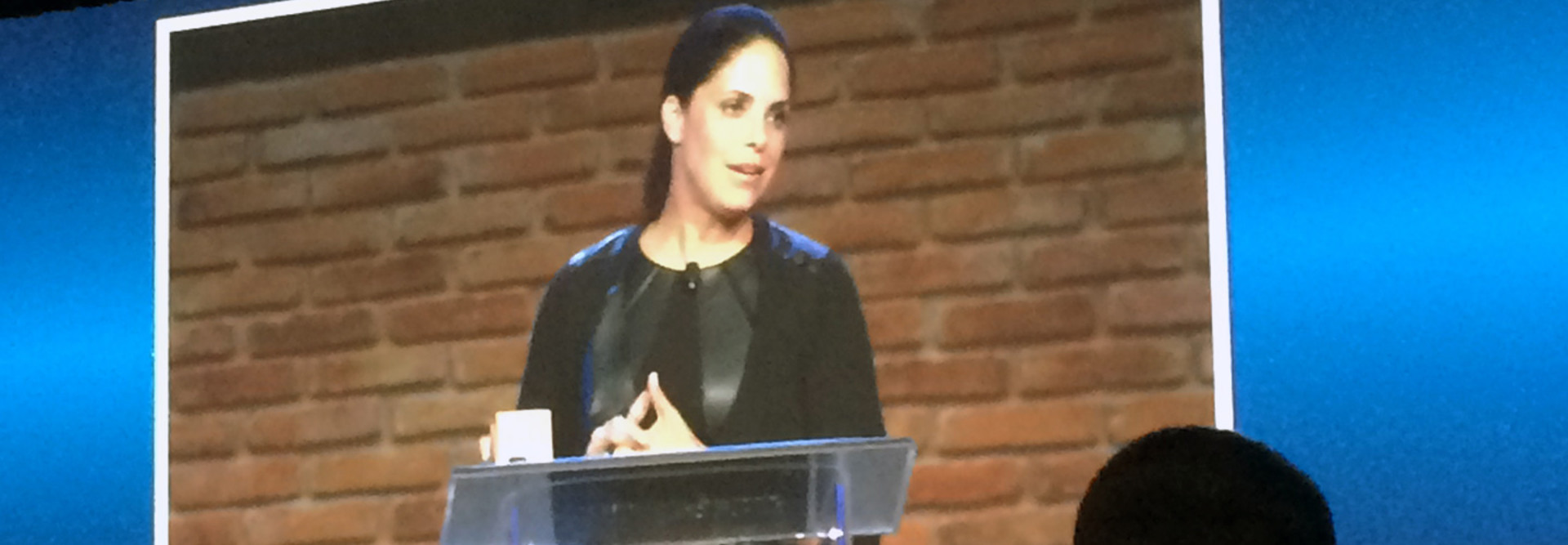ISTE 2015: Soledad O'Brien on How Technology Can Change Students' Lives
Broadcast journalist Soledad O'Brien led an energetic opening keynote at ISTE 2015 that challenged educators to take students to new heights through technology.
For a few moments during her keynote session, which kicked off the annual International Society for Technology in Education, O’Brien found herself at an uncomfortable place: On a stage at an educational technology conference, telling nearly 10,000 educators and education leaders that technology was not the answer.
"I might be in the wrong room to say this, but I think technology for technology's sake is a complete waste,” O’Brien said.
Instead of dissent, O'Brien found raucous support from thousands in the audience.
Technology is a tool, O’Brien said, a means to an end — not an end itself. As an example, O'Brien referenced her organization, the Starfish Foundation, which helps underprivileged students realize their dreams. Many of these students, even when given opportunities to succeed, often don't leave their comfort zones in pursuit of success. The cause, said O'Brien, is lack of exposure to possibilities.
O'Brien then brought 10 ISTE attendees to the stage to try out Google Cardboard, a bare-bones virtual-reality experience, using paper-based VR goggles and smartphones. Using the headsets, O'Brien took the attendees on a virtual test drive of a career in veterinary surgery. Technology like this, she said, can expand students' horizons by immersing them in different vocational opportunities.
"You could actually let them experience a different career; they could dive right in," O'Brien said.
But there are still many obstacles to enabling students’ use of technology. Getting access to high-speed Internet is still a challenge in many rural and underprivileged districts. The FCC’s expansion of E-rate funding, along with the White House’s ConnectED initiative, is helping to broaden adoption. The powerful exposure to new possibilities through technology can only happen by widening access, O’Brien said.
"I believe education today is the next civil right, which means you educators are at the forefront of a critical battle of who learns what, and how, and we have a great opportunity with technology," O'Brien said.
But there’s another matter at the heart of the issue. The integration of technology in the classroom is experiencing growing pains. This was a refrain heard throughout the first day of ISTE 2015.
Earlier in the conference’s opening presentation, U.K. educator Lord Jim Knight said technology is a powerful tool, but often it's not seamlessly integrated into the classroom experience.
"The thing that makes a difference is teachers," Knight said.
In speaking to EdTech, education policy analyst Tom Murray said that many educators are fed up with being stuck in roles where the device is king in the classroom. Without engagement, devices purchased with the best of intentions for the school district can become relegated to narrow roles, which end up having little or no impact on instruction.
“Too often, districts are focused on the device,” Murray said. “How do we shift focus of the devices in the classroom to enhance teaching and learning?”
That, according to Murray, is a major challenge facing schools across the country.
Catch all of EdTech’s coverage of ISTE 2015, including articles and video interviews, by visiting our official conference landing page.









